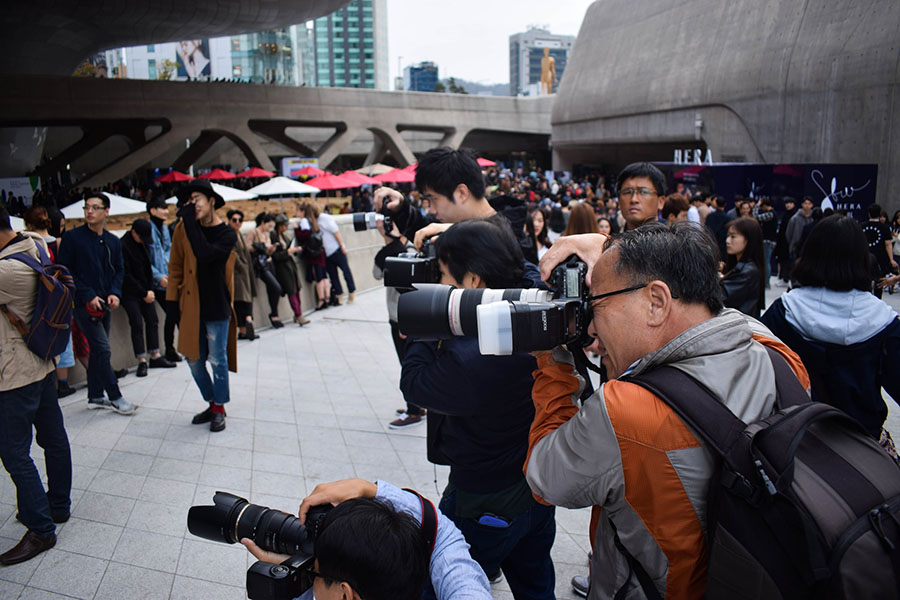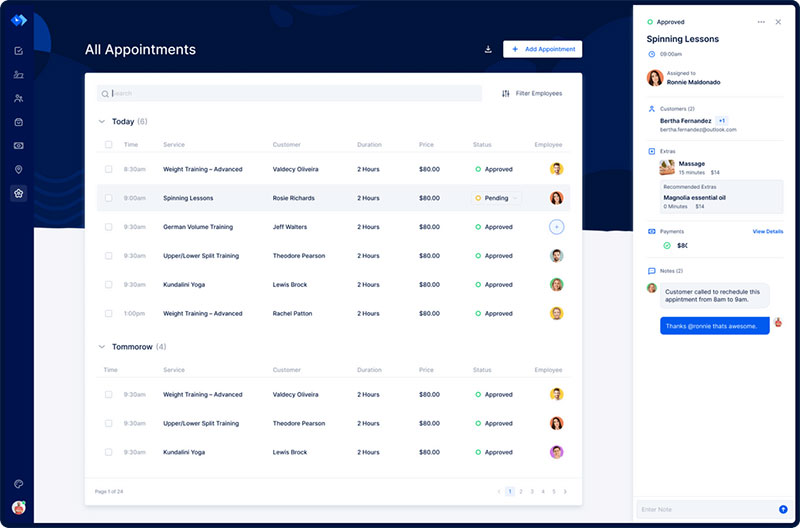Photojournalism is a form of journalism that uses images to tell a story. It keeps people informed about the things happening in the world.
It is a competitive career path that requires skills and quick thinking.
Those interested in a photojournalism career need to know what the job requires of them. They also need to be aware of what to expect.
The more one knows about this job, the easier it will be to prepare for it and find success. It takes some years to develop the skills and qualities needed to be a photojournalist, but it is not out of reach.
This article will discuss how to become a photojournalist. It will define the role of a photojournalist and list the steps to become one.
It will also answer common questions about this job.
What Does a Photojournalist Job Entail?
Photojournalists combine the work of photography and journalism into one job description. They take pictures to contribute to news media and to tell stories.
In general, photojournalism refers to taking still photographs. But in recent years it has also included taking video.
They use artistic and technical skills to capture informative and entertaining images.
Photojournalists often work for magazines and newspapers. In this capacity, they capture images that tell, develop, or break open a story.
They travel to different locations to photograph events, animals, or places of interest.
As journalists, they comply with an ethical framework that demands honesty and impartiality. They need to tell stories in journalistic terms.
Of course, they need to be knowledgeable about photographic tools. They must also be willing to work long hours in uncomfortable conditions and meet tight deadlines.
Data from the U.S. Bureau of Labor Statistics shows a median salary for photographers in 2020 at $41,280. Journalists reportedly made a median salary of $49,300.
Technical skills
Photojournalists work in a very fast-paced industry.
Often they are taking pictures in real-time and only have one chance to capture the images. So they need to understand the complexities of taking a photo.
Photojournalists need to have the same skills as all photographers. For example, they need to understand how lighting affects the shot.
They also need to completely understand how to use their equipment, edit images, change the background of a photo, and more, including mastering the use of an image generator.
Unlike other photographers, however, photojournalists are not focused on getting one shot. Their focus is on capturing the story behind the images.
And they should build a professional resume to show their work to get many promotions and offers.
For this reason, they often take a series of photos to convey a story.
Photojournalists don’t have time to set up shots and experiment with different settings. They need to be ready at all times, to capture moments as a situation develops.
They also need to edit photos without changing the content or the significance. Then they need to know how to upload the images to the internet using a variety of software.
People skills
Apart from technical skills, photojournalists need exceptional people skills. Even if a photojournalist works alone, they often interact with people at photoshoots.
People skills are useful if a photojournalist is trying to gain access to a story otherwise denied them.
Qualities Needed for a Career as a Photojournalist
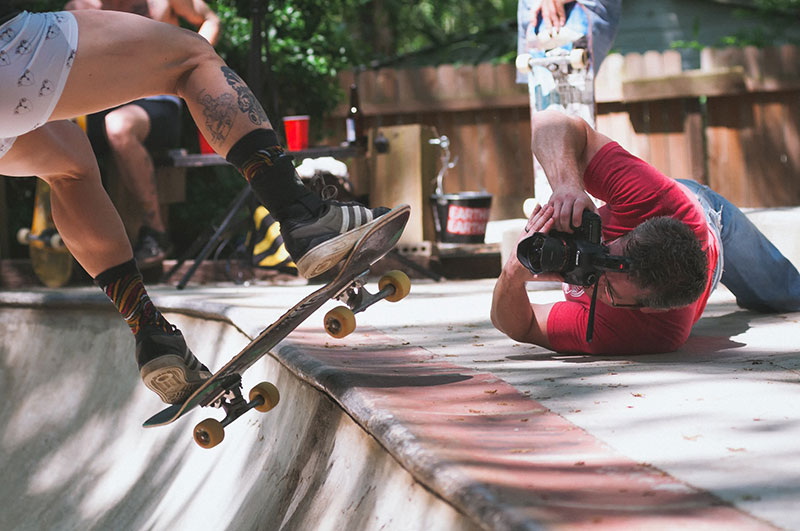
Photojournalists find themselves in a variety of working conditions. They may work in the field with a news team, take pictures of events, or work photoshoots for companies.
They can work in severe weather, under severe conditions, and sometimes witness gruesome disasters.
Photojournalism is hard work and those who want to become one need to have a strong personality. Some qualities necessary in a photojournalist are the following:
- Experience in photography
- Knowledge of current events
- Determination
- Wide range of skills
Experience in Photography
Photojournalism requires a deep understanding of photography.
Most photographers can take test shots beforehand. They can also take their time in setting up a shot and in making adjustments to the angle and the aperture.
Photojournalists are not afforded that same luxury. They often need to capture photos in the midst of a breaking story.
In-depth knowledge of photography and lots of practice help photojournalists get a good picture with one shot.
Knowledge of Current Events
Photojournalists are photographers and reporters. A good photojournalist needs to know and understand current events.
Then they can capture accurate reports and be in the right place at the right time for a good photo opportunity.
Determination
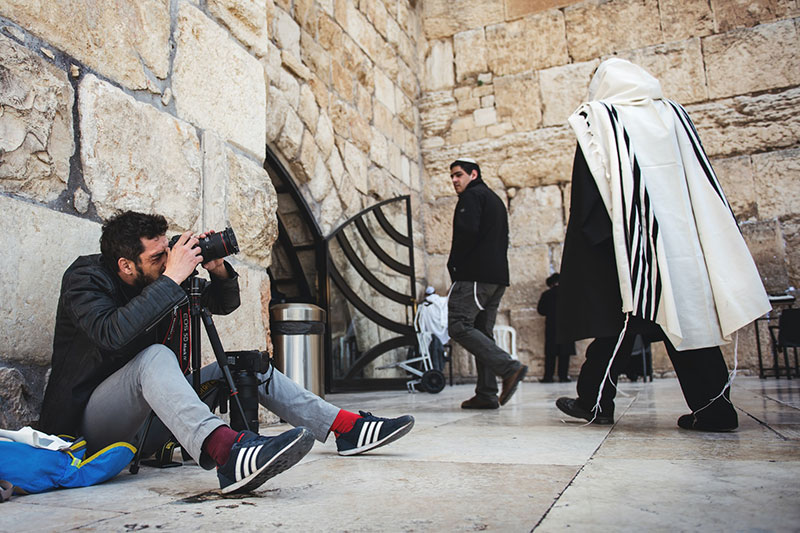
Like a reporter, photojournalists are exposed to significant obstacles and dangers. They may encounter bad weather, large crowds, and even physical danger.
They often have to carry heavy photographic equipment. As well, they must make quick decisions based on the circumstances.
Wide Range of Skills
Photojournalists often upload photos to the internet. These images are for use on television, websites, and mobile devices.
So they need advanced knowledge to upload photos using different types of software.
Programming, graphic design, and coding skills are not necessary. But they are appealing on a resume.
In recent years, photojournalism has expanded to include taking video. If a photojournalist can take videos, they will be more appealing to media companies.
Another skill that will beef up a resume is writing skills. If a photojournalist has a wide range of skills, media companies can hire one person for several jobs.
How to Become a Photojournalist
Those who want this career need to follow specific steps to set themselves up for success. Having a plan written out will help them keep focused and succeed.
The following steps show how to become a photojournalist:
- Learn the fundamentals
- Obtain an internship
- Create a portfolio
- Practice taking pictures
- Grow your network
- Search for work
These steps may take years to accomplish. Will it be easy? No.
But the more passionate a person is, the easier it will be for them to excel at photojournalism.
Learn the Fundamentals
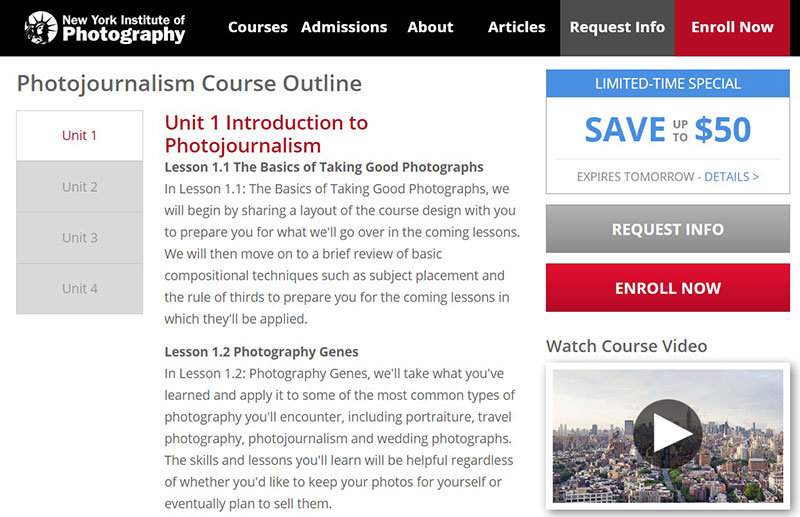
The first step in how to become a photojournalist is to get the proper education. Many photojournalists earn a bachelor's degree in journalism, photography, and communications.
Many universities offer a photojournalism degree.
Some employers hire applicants with a degree in a relevant field. For instance, political science or English.
A bachelor's degree and a photojournalism degree are not required to work as a photojournalist. But they do help when it comes to getting hired.
Enrolling in a course will provide more knowledge about the job. It can help hone the skills needed for photojournalism.
Plus, a certificate or a degree will be valuable in the eyes of an employer.
Consider enrolling in a class about photography or photographic techniques. These courses will provide a basic understanding of digital photography and editing software.
Other programs that some might choose to enroll in include:
- Associate of Science in Photography
- Bachelor of Arts in Photojournalism
- Undergraduate course about writing
- Undergraduate course about how to gather information for the media
Get more bookings with the right tool for the job
Staying organized has never been easier.
You can now manage your business and grow your brand with a single, powerful software that keeps all of your appointments in line, your clients organized and your business booming.
Trafft is perfect for business owners who need to streamline their booking experience both for their staff and their clients.
Trafft handles everything for you, even sending automated email or SMS reminders to your clients. No-shows? Not anymore!
The Trafft booking software adapts to different industries for a blissful online booking experience and employee management.
Want to know more? Check out Trafft's awesome features to see what you are missing.
Obtain an Internship
After receiving education, aspiring photojournalists need to practice what they’ve learned.
Many bachelor programs offer students the opportunity to complete an internship. Interning at a newspaper or magazine company offers many benefits.
Although interns don’t perform any photojournalistic tasks, they can learn about the industry. In some cases, an intern might be able to assist a photojournalist.
Find out about internship opportunities through the school's career services department. Or through the National Press Photographers Association website (www.nppa.org).
Some employers require applicants to have completed an internship program. Whether it’s through an internship program or not, it is important to gain experience before heading into the field.
Other opportunities for experience include working for the school newspaper. Students can take pictures, edit, use publishing software, write articles, and much more.
Create a Portfolio

Employers will most likely want to see a portfolio. This helps them to determine whether they should hire someone as a photojournalist.
So make sure to create a professional portfolio that displays your best work. Choose photos that show the kind of photojournalist you want to be.
For example, one may want to document sporting events, nature, political events, etc. Whatever the chosen subjects, include those in the portfolio.
Use photos that show a knowledge of photography. They should display proper color corrections and accurate, detailed captions.
Use photos from past experiences like internships, school newspapers, and past projects. Swap out old photos for new ones as you gain more experience and skills improve.
Practice Taking Pictures
Practice makes perfect. Anyone interested in photojournalism should be practicing photography as much as possible.
Do not wait for someone to offer you a job. Go out and practice your skills.
Set an assignment and challenge yourself to create a story with photographs. Take a camera everywhere and document what is going on.
That way one gets used to always having a camera. It will also help to improve one’s photography skills.
Look for stories. If you find one, pitch it to a few editors.
There is a chance that they will decide to publish it and pay you. If not, at least it has brought your name to their attention.
Grow Your Network

Establish and grow a network of professionals in the photojournalism field. This could include college professors, reporters, editors, photographers, and colleagues.
They can offer help for someone starting out in the field of photojournalism. They might have connections, know of job opportunities, or can vouch for you.
How can one grow a network? The easiest place to start is at school.
Be friends with the professors. Or find a photography group to join.
The second place to expand a network is at an internship.
Make nice with other reporters. Meet photojournalists and get to know the writers and producers.
Another way to grow a network is with an industry organization.
For example, the National Press Photographers Association (NPPA) offers workshops and seminars. This provides an opportunity to meet with professionals in this field.
One final way to network is to subscribe to photography magazines or newsletters.
Search For Work
The final step in how to become a photojournalist is to search for work. Education, experience, and a professional portfolio all create a competitive candidate for photojournalism.
The first place to look for work is entry-level jobs or work as a freelancer.
Everyone has to start at the bottom and work their way up. Be prepared to start with a low-level job before becoming a photojournalist.
Look for jobs online or ask people in your network if they know of any opportunities. Apply for staff photographer jobs at prospective employers.
Contact publications and submit a resume and portfolio. Applying to many jobs increases the chances of getting hired.
Create a resume that showcases your talent, skills, and experience.
When applying for a particular job, tailor the resume to it. Then put the final touches on the portfolio.
After interviewing for a job, write a thank you email to the company. This shows them that you are serious.
Unfortunately, photojournalism job opportunities are drying up.
The U.S. Bureau of Labor Statistics projects a decline in photographers between 2019 and 2029 at 4%. For the same timeline, it projects a decline in journalists at 11%.
So becoming a photojournalist is not easy. But it is possible with hard work and by following the above steps.
FAQs about becoming a photojournalist
1. What are the qualifications needed to become a photojournalist?
A degree in journalism or photography is not usually required, however, it can be useful. Yet it's crucial to have a solid grasp of journalism, storytelling, and photography.
Photojournalists must be able to think quickly on their feet, be at ease working in a deadline-driven workplace, and possess strong communication skills.
2. What type of equipment do I need as a photojournalist?
To take pictures in various lighting and conditions, photojournalists require a high-quality digital camera, lenses, and accessories.
To swiftly upload and transmit their photographs to respective news outlets, they should also have a laptop, editing software, and a steady internet connection.
3. How do I build my portfolio as a photojournalist?
Beginning photographers who want to become photojournalists should capture images of nearby events and compile a portfolio of their work. In order to get exposure and experience, they could also get in touch with local publications and offer their skills for free or at a discounted charge.
It is crucial to have a portfolio that shows a variety of work that demonstrates their capacity to convey narratives through photography.
4. What types of stories do photojournalists cover?
Breaking news, feature stories, and investigative pieces are just a few of the stories that photojournalists cover. They may be requested to cover anything, including political rallies, natural disasters, cultural events, and human interest stories.
The secret is to visually depict the story and convey it to the audience in an engaging and educational manner.
5. How do I find job opportunities as a photojournalist?
Newspapers, periodicals, internet news sources, and broadcast media all offer job prospects for photojournalists. To locate possibilities, it's critical to network with editors, reporters, and other photojournalists and develops relationships with them.
Photojournalists can also work for themselves as freelancers and sell their pictures to various publications.
6. What are some tips for working in dangerous or hostile environments as a photojournalist?
Photojournalists frequently work in stressful conditions that can be emotionally and physically taxing. It's critical to do an advanced study on the location, pay attention to your surroundings, and have an emergency plan in place if you want to be safe.
Also, it's critical to have the proper safety equipment and insurance to cover any potential losses or injuries.
7. How do I develop my storytelling skills as a photojournalist?
Photojournalists must be able to convey a narrative through their images. This entails comprehending the setting of the story, obtaining striking visuals, and editing those images to produce a narrative.
Also, they must be able to create captions that enrich the story with context and specifics.
8. What ethical considerations should I keep in mind as a photojournalist?
A tight code of ethics that includes being truthful, accurate, and fair in reporting is required of photojournalists.
Also, before releasing any photos, they should get permission from their subjects and respect their privacy and dignity. They must also work to report the story objectively and be aware of any prejudices they may have.
9. How do I negotiate fees and retain rights to my photos as a freelance photojournalist?
As independent contractors, photojournalists must bargain for payment and ownership of their photos.
Also, they must have a contract that specifies the conditions of their employment, such as usage rights, charges, and delivery dates.
10. What are some common challenges that photojournalists face and how can I overcome them?
Tight deadlines, restricted access to subjects, and the necessity to take striking pictures in challenging situations are common difficulties for photojournalists.
They must also cope with moral conundrums and the emotional toll that reporting on tragic occurrences can have. Photojournalists need to be flexible, resourceful, and resilient in order to meet these challenges.
If you enjoyed reading this article on how to become a photojournalist, you should also read this one about how to prepare for a photoshoot.
We also wrote articles about similar subjects like how to get more photography clients, becoming an event photographer, how to become a licensed photographer, social media marketing for photographers, real estate photography contract, appointment scheduling for real estate agents, photography studio management software, how to get your photography noticed, real estate photography marketing and photography mood board.

